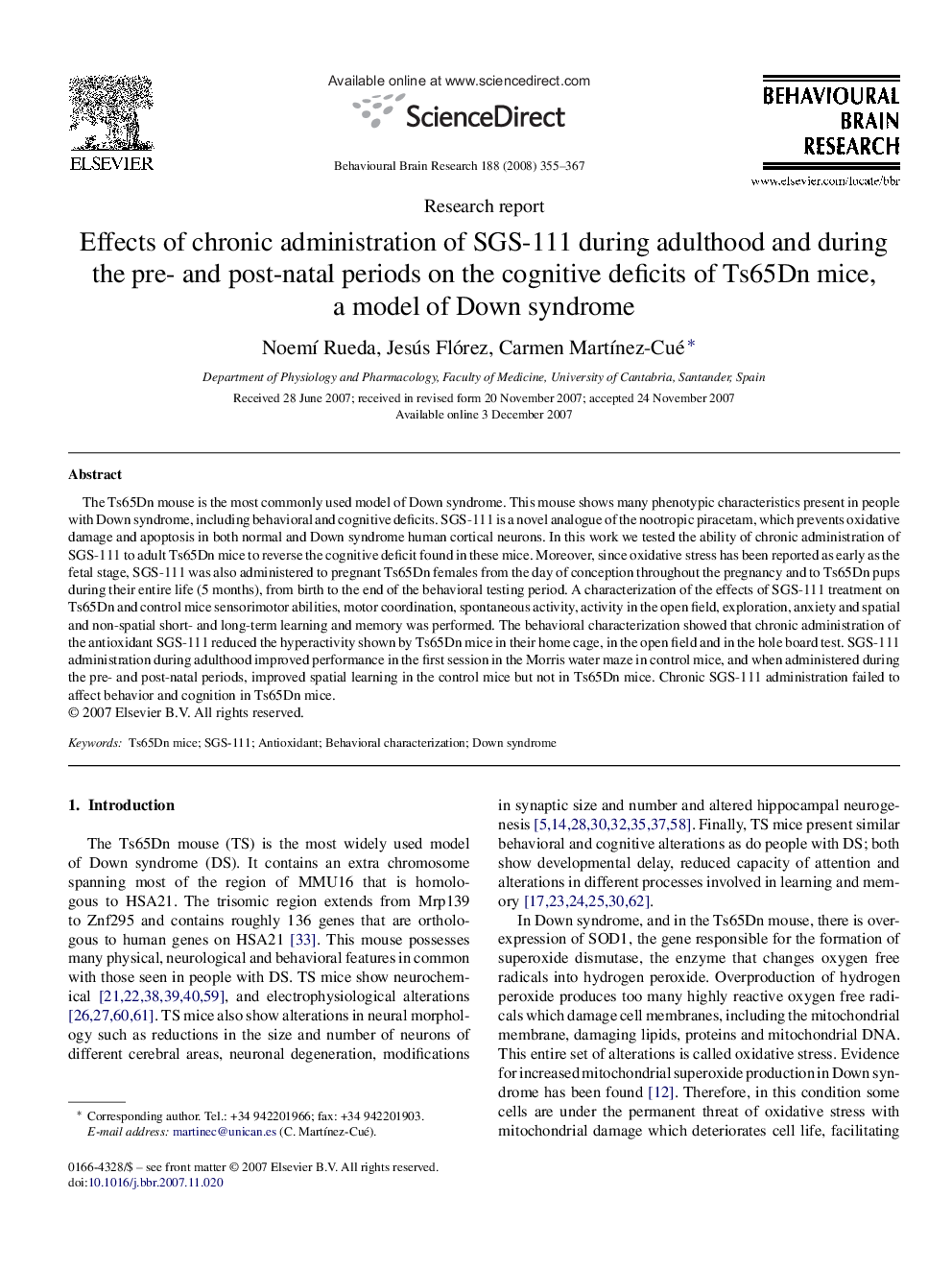| Article ID | Journal | Published Year | Pages | File Type |
|---|---|---|---|---|
| 4315405 | Behavioural Brain Research | 2008 | 13 Pages |
The Ts65Dn mouse is the most commonly used model of Down syndrome. This mouse shows many phenotypic characteristics present in people with Down syndrome, including behavioral and cognitive deficits. SGS-111 is a novel analogue of the nootropic piracetam, which prevents oxidative damage and apoptosis in both normal and Down syndrome human cortical neurons. In this work we tested the ability of chronic administration of SGS-111 to adult Ts65Dn mice to reverse the cognitive deficit found in these mice. Moreover, since oxidative stress has been reported as early as the fetal stage, SGS-111 was also administered to pregnant Ts65Dn females from the day of conception throughout the pregnancy and to Ts65Dn pups during their entire life (5 months), from birth to the end of the behavioral testing period. A characterization of the effects of SGS-111 treatment on Ts65Dn and control mice sensorimotor abilities, motor coordination, spontaneous activity, activity in the open field, exploration, anxiety and spatial and non-spatial short- and long-term learning and memory was performed. The behavioral characterization showed that chronic administration of the antioxidant SGS-111 reduced the hyperactivity shown by Ts65Dn mice in their home cage, in the open field and in the hole board test. SGS-111 administration during adulthood improved performance in the first session in the Morris water maze in control mice, and when administered during the pre- and post-natal periods, improved spatial learning in the control mice but not in Ts65Dn mice. Chronic SGS-111 administration failed to affect behavior and cognition in Ts65Dn mice.
